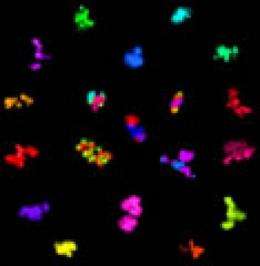Biologists publish findings on cell interactions

Two University of Iowa biologists have published a paper on how cells make specific interactions during development -- in the hope of one day learning more about human developmental disorders -- in the Aug. 2 issue of the journal Proceedings of the National Academy of Sciences.
Dietmar Schreiner, postdoctoral researcher, and Joshua A. Weiner, assistant professor of biology in the UI College of Liberal Arts and Sciences Department of Biology, write on the subject of cell adhesion. Cell adhesion is the way in which one cell binds itself to another cell by using specific molecules, one large family of which is known as the cadherins.
The researchers found that when a specific kind of cadherin molecule -- the 22-member gamma-protocadherin family -- are involved in linking adjacent cells together, it exponentially expands the molecular diversity and specificity with which cells can interact.
"We already knew that with 22 different members, the gamma-protocadherin family was diverse, and we had already shown that they are critical for the developing nervous system," said Weiner. "But what Dietmar was able to do here, for the first time, is develop a quantitative method to determine how each gamma protocadherin protein mediates cell-cell adhesion, and which family members can interact with each other. He finds that the proteins seem to freely associate in groups of four at the surface of each cell, but that in order for another cell to bind, it must have pretty much the exact same group of four. What this means is that, if you figure out all the possible combinations of gamma-protocadherins, this group of proteins can form over 200,000 distinct adhesive surfaces."
One implication of the work is that scientists have gained a better understanding of the ways in which cell linkages, including those made during the formation and modification of synapses, the points of communication between nerve cells, might go awry in a number of developmental disorders such as autism and mental retardation, as well as how brain circuits assemble correctly during normal development.
In the future, the researchers plan to study directy how the differential interactions mediated by the many combinations of gamma-protocadherins affects the formation of synapses in the developing brain, and what adhesion mediated by these proteins "tells" a young neuron to do.
Provided by University of Iowa - Health Science

















